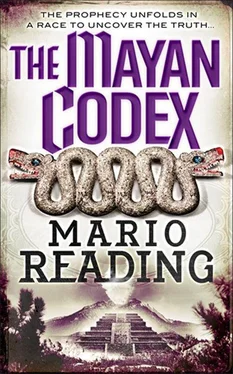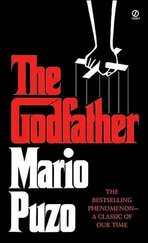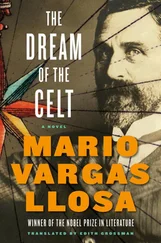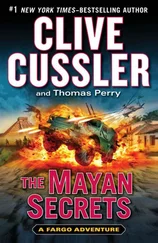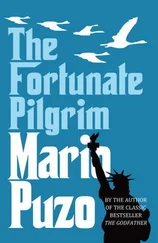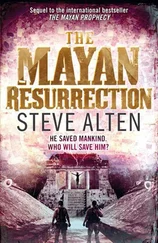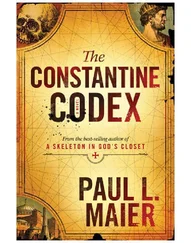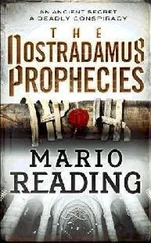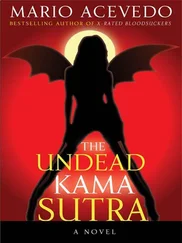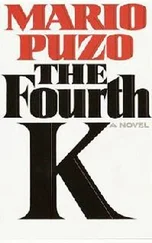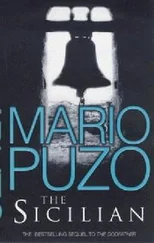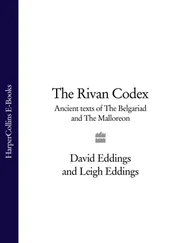Mario Reading - The Mayan Codex
Здесь есть возможность читать онлайн «Mario Reading - The Mayan Codex» весь текст электронной книги совершенно бесплатно (целиком полную версию без сокращений). В некоторых случаях можно слушать аудио, скачать через торрент в формате fb2 и присутствует краткое содержание. Жанр: Триллер, на английском языке. Описание произведения, (предисловие) а так же отзывы посетителей доступны на портале библиотеки ЛибКат.
- Название:The Mayan Codex
- Автор:
- Жанр:
- Год:неизвестен
- ISBN:нет данных
- Рейтинг книги:3 / 5. Голосов: 1
-
Избранное:Добавить в избранное
- Отзывы:
-
Ваша оценка:
- 60
- 1
- 2
- 3
- 4
- 5
The Mayan Codex: краткое содержание, описание и аннотация
Предлагаем к чтению аннотацию, описание, краткое содержание или предисловие (зависит от того, что написал сам автор книги «The Mayan Codex»). Если вы не нашли необходимую информацию о книге — напишите в комментариях, мы постараемся отыскать её.
The Mayan Codex — читать онлайн бесплатно полную книгу (весь текст) целиком
Ниже представлен текст книги, разбитый по страницам. Система сохранения места последней прочитанной страницы, позволяет с удобством читать онлайн бесплатно книгу «The Mayan Codex», без необходимости каждый раз заново искать на чём Вы остановились. Поставьте закладку, и сможете в любой момент перейти на страницу, на которой закончили чтение.
Интервал:
Закладка:
‘When I was a young child it was decided that, as second son of the noble household of the Ah Maxam, I should be trained in the duties of royal scribe, so that I could arrange royal ceremonies, oversee royal marriages, keep the genealogical lists, and record any tributes and offerings paid by client states. As ah ts’ib – “he of the writing” – I was an honoured and valued member of the royal household.
‘When the Franciscans came and took over our city, my father and the few remaining of our priests decided that I must become as one with the Spaniards – take on their customs, learn their language, study Latin, acknowledge their ascendancy – so that one at least amongst us could understand the full implications of the horror that was clearly about to fall upon our people. This I agreed to do.
‘To that end I studied hard, making myself useful to the friars in any and all capacities, until I attained a position as high as it was possible for one of Maya ancestry to go. Thanks to this I was able also, and via subterfuge, to warn my people of impending problems, destroy offending documentation, and influence Friar de Landa, to the extent that I was able, in the hope that, as one interested in our culture and history, he would ride upon the backs of our people without the use of his spurs.
‘This situation continued until three months ago. Some years before this time, thinking that Friar de Landa was a more tolerant man than he was, Nachi Cocom, last great ruler of the Cocom lineage, and imagining himself to be Friar de Landa’s friend, had shown the Friar the secret library of Maya writings, which included 2673 books and codices, 5000 sacred images and idols – including those to Kan u Uayeyub and Bolon Dzacab used during the Year-Bearing Ceremonies – and 13 large altar stones we know as kanal acantum. These, together with 22 smaller stones, and 127 vases and funerary urns containing the bones of priests, noblemen, and kings, made up the complete historical record of our people from the beginnings of the first Great World Age.
‘Cocom showed Friar de Landa these things on the understanding that they were no longer used, but merely kept as part of Maya historical record, and that he trusted that he could rely on Friar de Landa, as his friend and as a man of God, to honour the trust he was putting in him. Friar de Landa at first appeared to accede to this stipulation, leading Nachi Cocom to tell Friar de Landa about our belief in Los Aluxes. This belief states that a certain number of enlightened beings have been left behind by the gods to guard the magnetic spiritual places and objects of the earth, and that it is only via the intercession of these spiritual guardians that the destiny of the world may be secured. Cocom foolishly believed that Friar de Landa, with all his stated interest in Maya culture, was one such person.
‘When Nachi Cocom died, Friar de Landa repaid Cocom’s trust by seizing the library and all its contents, and by posthumously accusing the Chief of idolatry, digging up his body from its grave, burning its remains, and scattering his ashes across the fields. You must know that for a Maya king and spiritual leader, the manner of his death and burial is of the utmost importance. To die well is considered a blessing amongst our people. Maize would have been placed in Cocom’s mouth, and jade and stone beads would have been added as currency to pay for his spirit’s journey through the underworld. His corpse would have been wrapped in cotton, and both his body and his grave would have been covered in cinnabar, as red is considered by us to be both the colour of death and of rebirth.
‘By digging up Nachi Cocom’s body, Friar de Landa thought to deprive Cocom’s soul of eternal rest, and by seizing the library he thought to manifest his and his Church’s dominance over our traditional spiritual leaders.
‘Then, more recently, Friar de Landa received further information from the traitor Antonio Gaspar Xiu [the former Chi Xiu], descendant of Tutul Xiu, great chief of the Xiu clan, traditional enemies of the Cocoms, about the continuing power of the Maya religion. Thanks to this information, and to the privileged knowledge he had of our holy books, Friar de Landa convinced himself that those who had allowed themselves to be baptized by the Franciscan order were secretly continuing in the faith of their forefathers. I attempted to explain to him that what was in fact occurring was a natural thing – an inevitable misunderstanding occasioned by Friar de Landa’s transformation of the great Maya pyramid at Izamal into the Catholic Church of San Antonio. I told him that my people were bewildered by the mass of contradictory messages they were receiving.
‘“Then we must un-confuse them,” said the Friar.’
80
‘So Friar Diego de Landa, scourge and nemesis of the Maya, was born. But the Friar was careful not to take on too much responsibility for the outrages he was about to perpetrate, as he did not wish to alienate his masters in Rome. Instead he sent the army on ahead of him. Then he followed along, some days behind, to sweep up the army’s leavings. He took me along as aide, secretary, and translator, so I am able to bear witness to what happened next.
‘In the town of Cupul, the army decided to burn the headman and his advisors alive. To achieve this, they crucified them, and placed braziers beneath their feet. Then they lit the braziers and forced the townspeople to watch the scene. Those they did not burn, they hanged.
‘Later, the Spaniards moved against the Yobain, in the town of Chels. In this town they took all the leading men and placed them in the stocks, and beat them. Then they placed the men, still in the stocks, inside a house, which they then burned down. This was a different system to that which they had used in Cupul.
‘Next, they moved the women and children out of the village. Feeling that they had not sufficiently made their point to the outlying villages, the Captain of the Spaniards then took the women and ordered them strung up to the branches of a great tree, with their children hanging beneath them like fruit. This, I believe, was done to undermine Maya belief in the Great World Tree, which to us supports all life. This particular Maya tree, we were to observe, supported only death.
‘In the next town, Verey, and feeling that some of the women were too beautiful and that they might therefore inflame the soldiers to unholy acts, the Captain of the Spaniards ordered that their breasts be cut off, and that they should then be hung in full view of the whole village to prove to our people that the Spaniards were indifferent to our women. These women, too, died.
‘The Friar and his retinue, of which I formed a part, arrived in these towns two to three days after the soldiers had passed. The people, fearing reprisals, had not dared to cut down the bodies, which stank and putrefied in the midsummer heat. The Friar, wishing to be seen to act in a kindly fashion after the outrages of the soldiers, allowed the townspeople to cut down the victims of his purge – their bodies, however, could not be buried, but must be burnt, and, like Nachi Cocom’s, be scattered over the fields. This the Friar ordered.
‘Next, our retinue moved to the provinces of Cochuah and Chetumal. Here our people, hearing of what the Spanish had done to their brothers and sisters, rose up against them. But without proper weapons, fighting dogs, and horses, they were powerless. Those who were captured had their noses, and their hands, and their arms, and their legs, and in the case of the women, their breasts, and in the case of the men, their genitals, carved off. Then all were taken, alive or dead, to the cenote from out of which the people drew their water, and, with gourds tied to their feet or what remained of their trunks, they were thrown into the deep waters. Children who could not walk as fast as their mothers were speared. This we heard from the survivors, of whom there were few, as most had been taken into the Spaniards’ service as slaves.
Читать дальшеИнтервал:
Закладка:
Похожие книги на «The Mayan Codex»
Представляем Вашему вниманию похожие книги на «The Mayan Codex» списком для выбора. Мы отобрали схожую по названию и смыслу литературу в надежде предоставить читателям больше вариантов отыскать новые, интересные, ещё непрочитанные произведения.
Обсуждение, отзывы о книге «The Mayan Codex» и просто собственные мнения читателей. Оставьте ваши комментарии, напишите, что Вы думаете о произведении, его смысле или главных героях. Укажите что конкретно понравилось, а что нет, и почему Вы так считаете.
